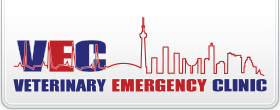Anesthesia is a vital component to providing quality care in veterinary medicine. The Anesthesia service at the VEC is overseen by board certified anesthesiologist Drs. Nicole Rolfe and Krista Mitchell.
The role of an anesthesiologist is vast and multifaceted. Many procedures, from the most complex surgery to routine stress and pain management, rely on the careful administration and thorough monitoring of anesthetic drugs, in order to ensure the comfort and safety of the patient.
Generally, anesthetic is administered in 2-3 phases. Patients are first given a tranquilizer and pain medication to help relieve their anxiety, making animal more comfortable and lowering the dosage requirement for anesthetic agents to be used during the next phase. In order to render the patient unconscious quickly, comfortably and safely, anesthesia is then induced though intravenous injection. This sedated state is then sustained through inhaling an anesthetic gas dispensed through a tracheal tube.
The anesthesiologists are supported by a team of specially trained veterinary technicians.
In order to ensure the safety of your pet, its condition is closely monitored throughout the visit at the VEC. Blood oxygen content is monitored through the use of a pulse oximeter, while an ECG (electrocardiogram) is employed to monitor the patient’s heart rate and to watch for irregularities in electrical activity, such as arrhythmias. Breathing, body temperature and blood pressure are also monitored continuously.
Anesthesia will also be provided to sedate patients undergoing diagnostic imaging, such as an MRI or a CT Scan, in order to ensure that the most accurate results are produced without stress or discomfort to the animal.


